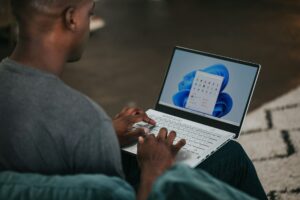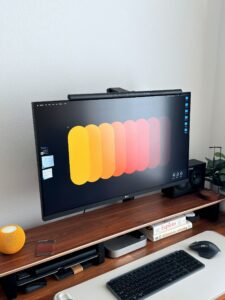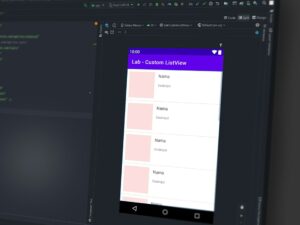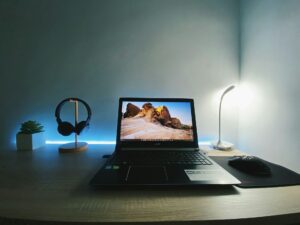How to Speed Up Your Windows PC Without Installing Extra Software

How to Speed Up Your Windows PC Without Installing Extra Software
It is something that almost everyone goes through at some point: your Windows computer, which used to seem quite quick, begins to slow down. It takes longer for applications to launch, the starting process seems slow, and even surfing for ordinary purposes might feel more burdensome than it should. The good news is that in order to solve it, you do not have to hurry out and install additional software or sophisticated optimization programs. Windows comes with a whole host of built-in functions and configurations that, with a few adjustments, may assist in bringing your personal computer back to life. I will walk you through each stage of the process.
Provide Your New Business with a Blank Slate
When you switch on your computer, there are a lot of applications that are starting up at the same time, which is one of the most frequent reasons why it seems sluggish. It is common for new apps to join themselves to the startup list without your knowledge over the course of time.
To resolve this issue, open the Task Manager by pressing the Ctrl, Shift, and Esc keys simultaneously, and then choose the “Startup” tab. You will see a list of applications that start up automatically when the computer boots up. At this moment, you should disable any applications that you do not need, such as chat apps or update checks. This will not remove them from your computer; rather, it will prevent them from starting up each time your computer starts up. This may save you valuable seconds (or even minutes) while your computer is starting up.
Make Use of the Built-in Tools to Free Up Disk Space
When the hard disk or solid-state drive (SSD) begins to fill up, Windows computers may experience a slowdown in performance. To our good fortune, Windows is equipped with tools that can remove unwanted files.
First, go to Settings > System > Storage, and then hit the “Temporary files” button. Within this location, you will be able to securely erase any remaining installation files, cache, and other garbage that has silently accumulated. Additionally, you have the option to activate Storage Sense, a function that helps you automatically clear up temporary files and empty your recycle bin on a predetermined timetable.
Make adjustments to the visual effects in order to improve it.
Microsoft Windows is known for its animations and other sophisticated visual effects; nevertheless, these features may use a lot of resources, particularly on older computers.
Right-click on This PC, choose Properties, and then select Advanced system settings from the menu that appears. Click the Settings button located in the Performance section. In this section, you have the option to pick “Adjust for best performance,” which disables the majority of the effects, or “Custom,” which allows you to deactivate just the animations that you deem to be unneeded, such as sliding windows or fading menus. There is a good chance that you will immediately notice faster response times.
Your computer should be restarted more often.
Restarting your computer eliminates background programs, temporary files, and memory leaks that have accumulated over time. Although it may seem like an overly simplistic solution, it is really very helpful. It is recommended that you do a fast restart once every few days if you keep your personal computer in sleep mode for a period of time that spans many days or weeks.
To clean and defragment your disk, use disk cleanup.
Performing Disk Cleanup and defragmentation on older personal computers that use mechanical hard drives (HDDs) may enhance the performance of the computer. Disk Cleanup is a program that may be executed by typing it into the search box of Windows and then removing any unnecessary system files.
To proceed, look for the option to defragment and optimize drives. In the Optimize menu, choose your hard disk drive. In most cases, you won’t need to take any more steps since Windows will handle optimization automatically if you have a solid-state drive (SSD).
Continuously update Windows.
Not only do Windows updates remedy security flaws, but they often also provide enhancements to the operating system’s efficiency. To check for updates on a regular basis, go to Settings > Update & Security > Windows Update > Windows Update. Even though it may seem cumbersome, fresh upgrades have the ability to address flaws and increase the efficiency with which your personal computer utilizes its resources.
Eliminate Features and Applications That Are Not Being Used
In the long run, it is simple to install apps that you do not often use. These may cause your computer to operate in the background, use the space on your disk, and slow it down.
The list may be seen by going to Settings > Apps > Apps & features and scrolling through it. Apps that you no longer need should be removed from your device. Even liberating a few gigabytes may make a difference, particularly on devices that use solid-state drives (SSDs) that are smaller.
Turn off applications that run in the background.
Certain applications are permitted to operate in the background on Windows in order to give alerts or update information. It may be handy, but it may also deplete resources. You may turn off applications that do not need continuous operation by going to Settings > Privacy > Background apps and turning them off.
A sluggish computer does not necessarily indicate that it is time to upgrade to new hardware or purchase pricey optimization software. Through the exploration of Windows’ own built-in capabilities, it is often possible to restore speed, reduce the amount of clutter that is not essential, and get your personal computer back to the way it felt when it was first purchased.
Sometimes the most little adjustments, such as adjusting the applications that start up automatically, clearing up disk space, or turning off visual effects, may have the most significant influence. Furthermore, the greatest part is that you do not need to install anything further in order to make it happen.




